Have you ever wondered just how big sunfish can get? These unique and fascinating creatures come in various shapes and sizes, but some can grow to an astonishingly large size. In this article, we’ll take a closer look at different types of sunfish and compare their sizes, from the tiny, almost imperceptible pygmy sunfish to the colossal ocean sunfish, which can weigh more than a car. Whether you’re a marine enthusiast or simply curious about the natural world, read on to discover the amazing range of sizes that sunfish can reach!
Sunfish Size Comparison: Just How Big Do the Different Types Get?
Please note that these are approximate sizes, and individual fish can vary in size depending on various factors. Also, this is not an exhaustive list, and there may be other species of sunfish not included here. With that being said, here is a list of sunfish species based on their average adult size, listed from largest to smallest according to length. Weights are included as well:
1. Ocean Sunfish (Mola Mola) – Up To 10 Feet In Length And 5,000+ Pounds
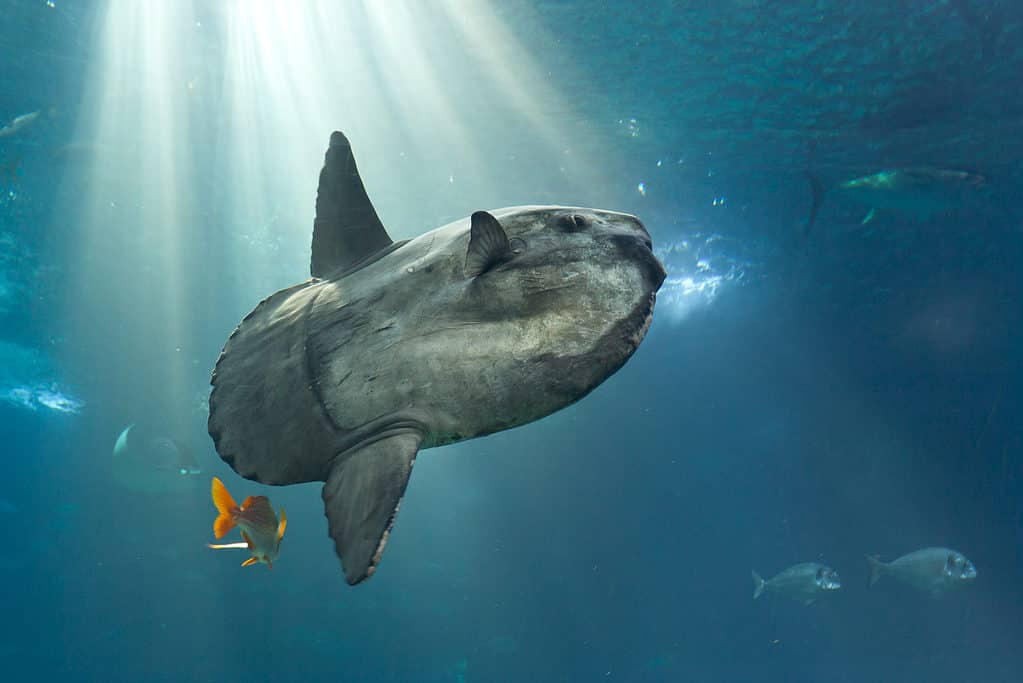
A world record saltwater sunfish was recently discovered near the Azores.
©Rui Manuel Teles Gomes/Shutterstock.com
The ocean sunfish, also known by its scientific name Mola mola, is a species of fish that can be found in tropical and temperate oceans worldwide. It is known for its large size, with adults growing up to 10 feet long (3 meters). They weigh around 2,200 pounds (1,000 kg) on average but have been known to reach up to 5,000 lbs.!
Despite their size, ocean sunfish are awkward swimmers that steer with their clavus and use their huge dorsal and anal fins to move about. They eat tiny fish and crustaceans in addition to jellyfish, although jellyfish are their main source of nutrition.
Ocean sunfish are a popular subject of fascination among marine enthusiasts and researchers alike, due in part to their impressive size and unusual appearance.
2. Hoodwinker Sunfish (Mola Tecta) – Up To 7.9 Feet In Length
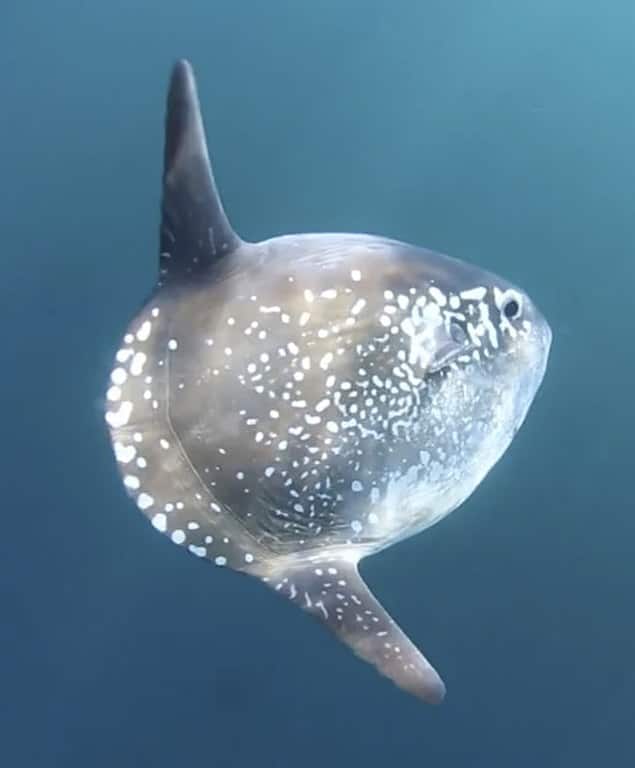
Mola Tecta
©Explorasub / CC BY-SA 4.0, via Wikimedia Commons – Original / License
Identified for the first time in 2017, the hoodwinker sunfish (Mola tecta) is a recently found species of sunfish. This species is believed to be quite comparable in size to the more well-known ocean sunfish (Mola mola).
Although the actual size range of the hoodwinker sunfish is not well-documented, based on the discovery of other Sunfish species, it has an average length of 4 feet but can reach around 8 feet.
It is possible that the hoodwinker sunfish can reach larger sizes like its Mola Mola cousin which can grow up to 10 feet long and weigh nearly 5,000 pounds.
However, further research may be necessary to determine the exact size range of the hoodwinker sunfish and how it compares to other sunfish species.
3. Bluegill Sunfish (Lepomis Macrochirus) – Up To 12 Inches In Length
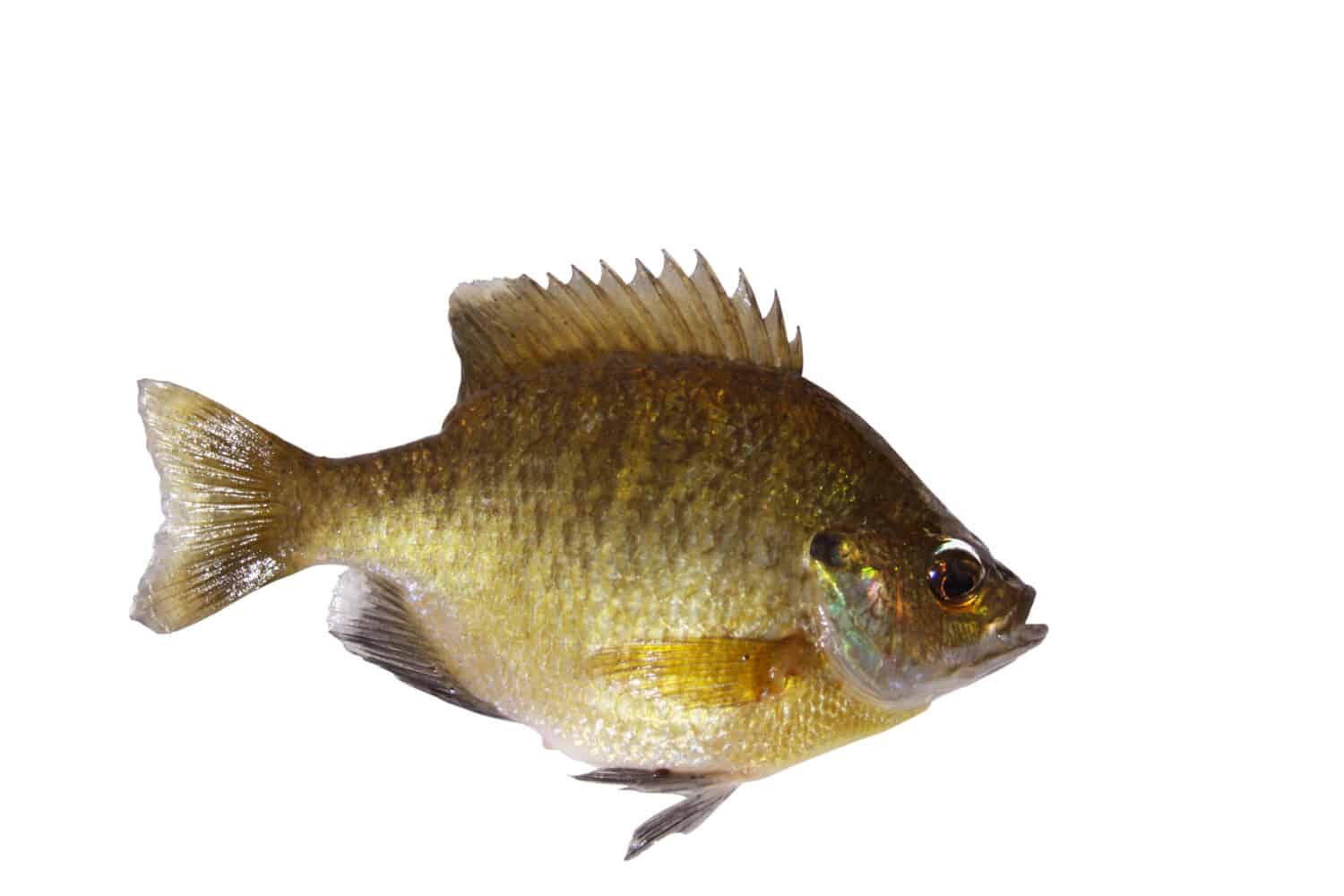
Bluegill Sunfish (Lepomis Macrochirus)
©dcwcreations/Shutterstock.com
The Bluegill Sunfish (Lepomis Macrochirus) is a freshwater fish native to North America, frequently found in ponds, streams, and lakes. They are a popular sport fish, known for their colorful appearance, and grow up to about 12 inches in length and weigh up to about 4 pounds. Male bluegill sunfish often have vivid blue and yellow coloring on their cheeks and gill covers, while females tend to have more muted colors.
They feed on small invertebrates, fish eggs, and small fish and exhibit paternal care, with males constructing nests on the bottom of the water they spawn in to protect their eggs and young from predators. Bluegill Sunfish are important hosts for freshwater mussels and exhibit different mating tactics and behaviors.
The species has been the subject of research on behavior, habitat, and ecology, including studies on their escape response and dorsal and anal fin function. Overall, Bluegill Sunfish are a fascinating and important species of freshwater fish in North America.
4. Rock Bass (Ambloplites Rupestris) – Up To 12 Inches In Length
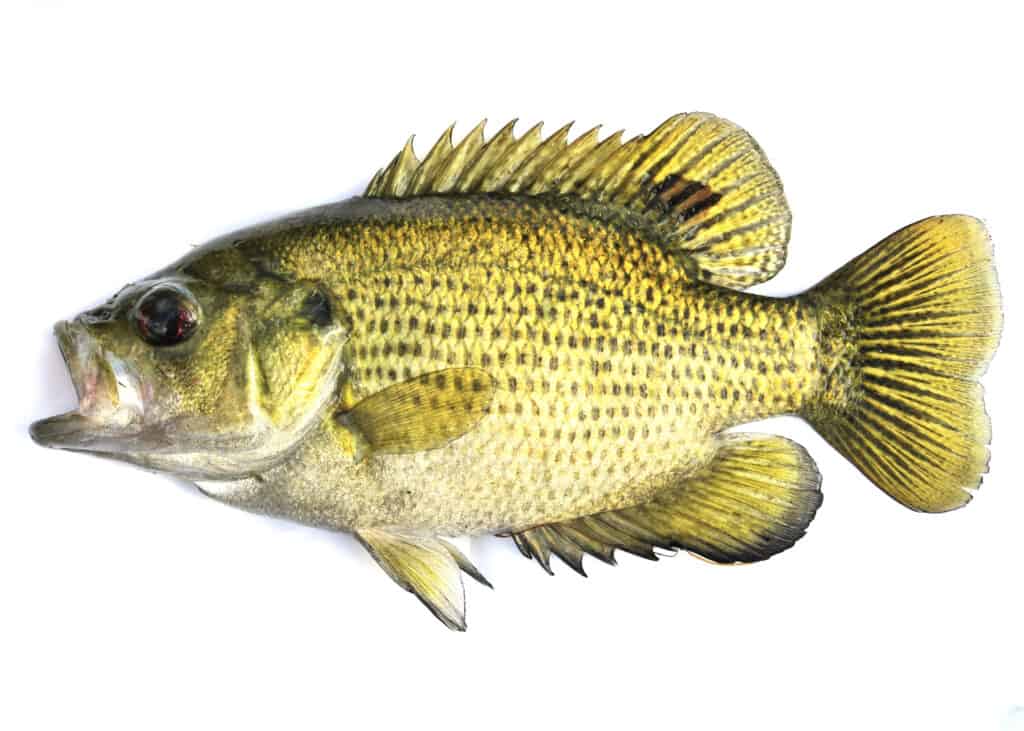
An image of a freshwater rock bass.
©iStock.com/Lightwriter1949
A freshwater sunfish endemic to east-central North America, the Rock Bass (Ambloplites Rupestris) is also known as the rock perch, goggle-eye, red eye, and black perch. Though there is some variation in length and weight among individuals, Rock Bass are generally small to medium-sized fish that are an important part of the freshwater ecosystem.
The species can grow up to about 12 inches in length, with the largest specimen on record weighing about three pounds and measuring just over a foot long. On average they weigh about a pound.
Rock Bass are often found in rocky areas of rivers and lakes, where they prey on small fish, crayfish, and other crustaceans. They are not typically targeted by anglers for sport but can be caught using a variety of bait and lures.
5. Green Sunfish (Lepomis Cyanellus) – Up To 12 Inches In Length

The Green Sunfish is a small freshwater sunfish that occur throughout the USA and northern Mexico.
©Sean McVey/Shutterstock.com
The Green Sunfish (Lepomis Cyanellus) is a freshwater fish species found in the sunfish family (Centrarchidae), which is part of the Perciformes order. They are typically found in various lakes, rivers, and streams across North America. Green sunfish can grow up to around 7 to 10 inches in length, with the largest known specimen measuring over 12 inches long. The average weight of a green sunfish is around 0.5 to 1.5 pounds. They are known by their greenish-blue back, yellowish sides, and dark green opercles. They have spiny dorsal fins and can be identified by their thick, slightly compressed body shape with a small mouth and sharp teeth.
Green Sunfish are panfish that are enjoyed by many anglers due to their willingness to take many types of bait and artificial lures. In terms of ecology, the Green Sunfish is classified as somewhat invasive, given its voracious feeding habits and ability to out-compete other fish species in certain circumstances. Nonetheless, they remain a popular game fish in many regions.
6. Warmouth Sunfish (Lepomis Gulosus) – Up To 10 Inches In Length
Despite being a lesser-known species of sunfish, the Warmouth Sunfish is interesting and unique. The Warmouth Sunfish (Lepomis Gulosus) is a freshwater fish found in the eastern United States. They are similar in appearance to other sunfish species, such as rock bass and green sunfish, but are larger and have a distinctive large mouth.
Warmouth Sunfish can grow up to about 10 inches (25 cm) in length and their weight can range from a few ounces to over a pound depending on various factors.
Warmouth Sunfish have dark, mottled coloring with a vertical bar under the eye. They feed on small fish, crustaceans, and aquatic insects. The species is not commonly used as a sport fish but can be caught on small bait or flies and is reportedly a good-eating fish. Warmouth Sunfish have been successfully spawned indoors, and several studies have been conducted on their propagation.
7. Redbreast Sunfish (Lepomis Auritus) – Up To 9 Inches In Length

Redbreast Sunfish (Lepomis Auritus)
©Aleron Val/Shutterstock.com
The Redbreast Sunfish (Lepomis Auritus) is a freshwater fish species belonging to the sunfish family (Centrarchidae). Found throughout North America, the Redbreast Sunfish can grow up to around 7-9 inches in length and weigh up to 1.5 pounds. They are known for their distinctive reddish-orange breast and blue-green scales.
The species is found in rivers, streams, and creeks where they feed on aquatic insects, mollusks, and small fish. Redbreast Sunfish are a popular game fish in many regions and are often caught using artificial lures or natural baits. The species is not known to have any adverse ecological effects and is considered an important part of many freshwater ecosystems.
8. Longear Sunfish (Lepomis Megalotis) – Up To 9 Inches In Length
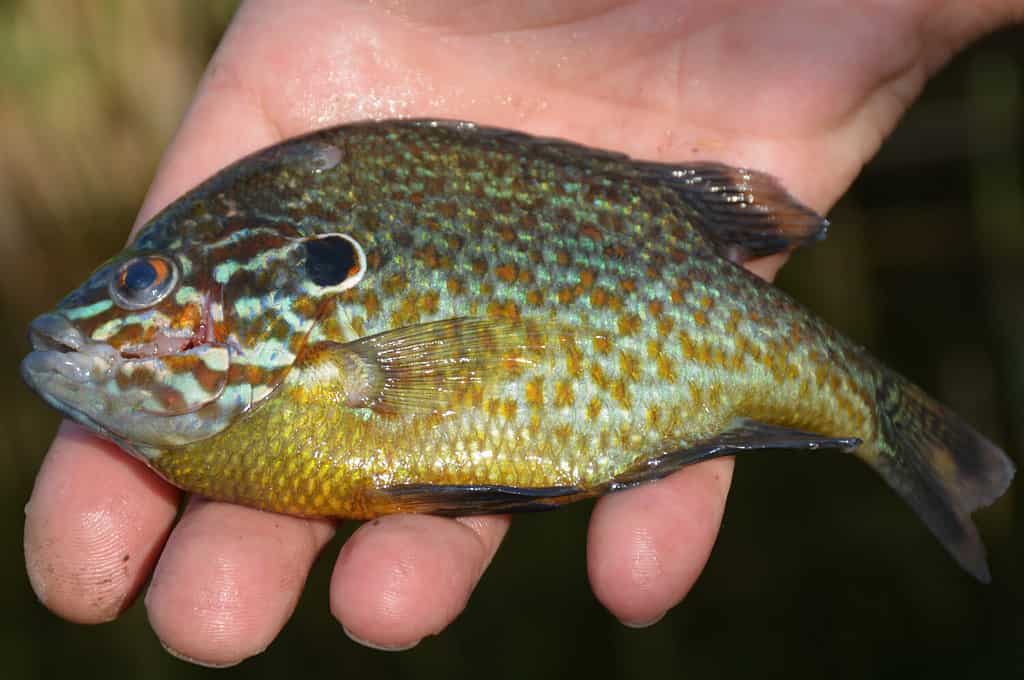
Longear Sunfish (Lepomis Megalotis)
©Self-taught/Shutterstock.com
The Longear Sunfish (Lepomis Megalotis) is a freshwater fish found in North America and is a species within the sunfish family (Centrarchidae). This is a unique and interesting species of sunfish that plays an important role in many freshwater ecosystems. They can grow up to around 7 inches in length, although some individuals have been reported to reach up to 9 inches. They have a maximum recorded weight of up to 1.7 lbs. However, on average, the species usually weighs less than a pound.
Longear Sunfish have a compressed, oval-shaped body and bright, colorful markings, including red or orange marks on the edge of their fins. They are typically found in rocky or gravelly bottoms of streams, creeks, and rivers where they feed on aquatic insects and small fish. Longear Sunfish are not usually sought by anglers for sport but can be caught using small lures or flies.
9. Flier (Centrarchus Macropterus) – Up To 8 Inches In Length
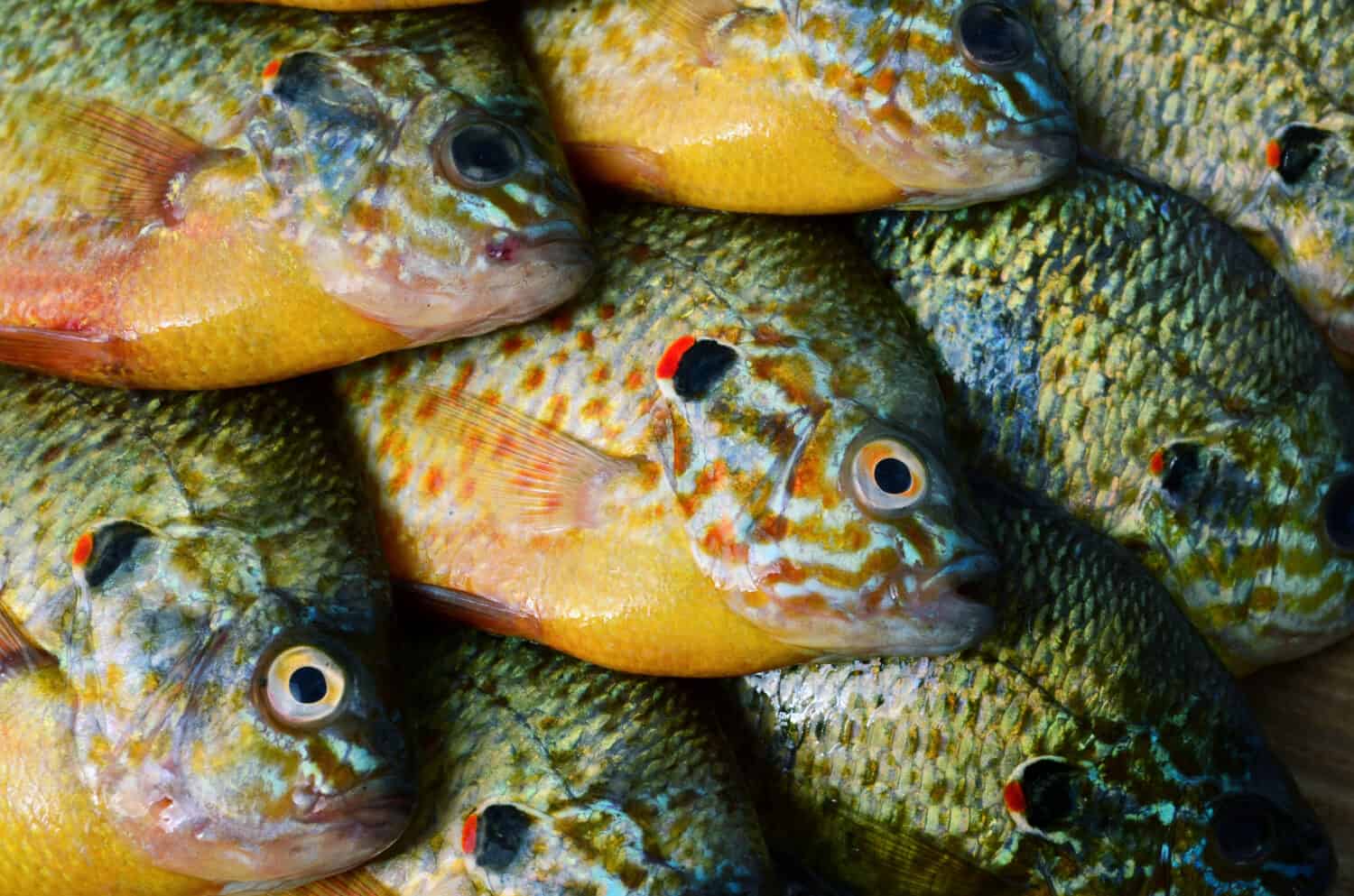
The flier (Centrarchus macropterus)
©dmitro2009/Shutterstock.com
The flier (Centrarchus macropterus) is an interesting species of freshwater ray-finned fish from the sunfish family, Centrarchidae. The scientific name for flier, Centrarchus macropterus, refers to the long anal spines and long fins of the fish. This species is typically found in the southern coastal plain of the United States, from Maryland to Florida and Texas. They grow up to 8 inches in length and weigh up to 1.5 lbs., although they tend to average around 5 inches and less than a pound.
These sunfish prefer clear, acidic waters such as swamp ponds, lakes, and slow-moving streams. Fliers feed on insects, crayfish, small mollusks, and small fish, and they are solitary fish that do not typically form schools. They use their long dorsal and anal fins to maneuver among aquatic plants and to find shelter. While they are not typically fished commercially, fliers are caught by anglers for recreational purposes, and they are considered good eating.
10. Pumpkinseed Sunfish (Lepomis Gibbosus) – Up To 7.5 Inches In Length

Pumpkinseed Sunfish (Lepomis Gibbosus)
©Fabian Junge/Shutterstock.com
The Pumpkinseed Sunfish (Lepomis Gibbosus), also known as the pond perch, common sunfish, punkie, sunny, or kivver, is a small to medium-sized freshwater fish found in North America. They can grow up to around 7.5 inches in length, with the largest specimen on record weighing just over a pound.
Pumpkinseed Sunfish have a distinctive, almost circular body shape and striking coloration, including bright orange or yellow on their belly and green, blue, or orange patterns on their scales. They are often found in slow-moving or still bodies of water such as ponds, lakes, and streams, where they feed on insects, crustaceans, and small fish.
Pumpkinseed Sunfish are a popular game fish in some areas and can be caught using baits such as worms, small lures, and flies. However, the species has also been associated with some negative ecological impacts in areas where they have been introduced as non-native species.
The Largest Sunfish Ever Recorded/Caught
The most recent and widely reported record for the heaviest bony fish (which includes sunfish) goes to a specimen found in the Atlantic and was officially documented in December 2021 by the Guinness World Records. This sunfish weighed 5,070 pounds. However, there have been more recent findings as reported by some sources that suggest an even bigger bony fish believed to be the heaviest ever discovered with a weight of 6,049.48 lbs., but further research and documentation are still needed to confirm this claim.
Best Places And Time Of Year To Catch Sunfish
The best places and times of year to catch sunfish can vary depending on the location. Sunfish can be caught throughout the year, but they are typically more active during the warmer months and especially during the spring and early summer when they gather in the shallows to spawn.
The best locations to catch sunfish can often be found near structures such as weed beds, sunken trees, logs, rocks, and drop-offs. For those who like shore fishing, scouting shoreline areas in search of nesting colonies can be a good strategy. Live bait fishing is generally the simplest tactic for catching sunfish, but artificial lures and flies can also be effective.
Before fishing, it is important to check with your local regulations for the season, limit, and other information on sunfish fishing in your area.
In Conclusion
Hopefully, this comparison of common sunfish species in North America has shown that while they share many similarities, each species is unique in its own way. Understanding the differences in size and anatomical features of these fishes is critical for anglers who love to fish for sunfish and for conservationists who aim to maintain healthy populations of these species in freshwater ecosystems Irrespective of the size difference and unique features of these species, they are all important and fascinating species of sunfish that play a crucial role in their freshwater habitats.
The photo featured at the top of this post is © Anna K Mueller/Shutterstock.com
Thank you for reading! Have some feedback for us? Contact the AZ Animals editorial team.







